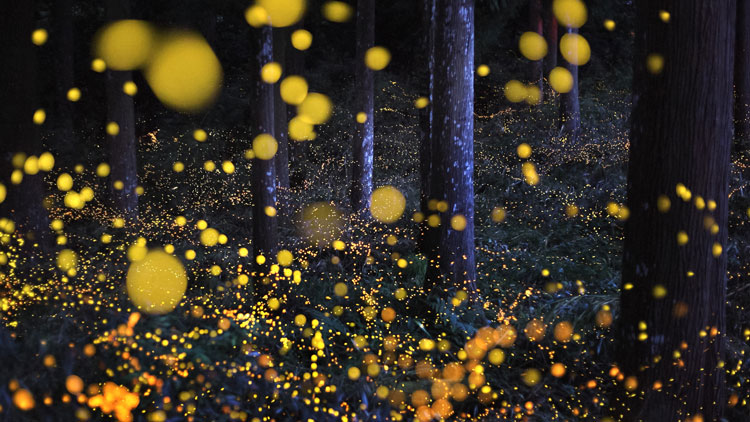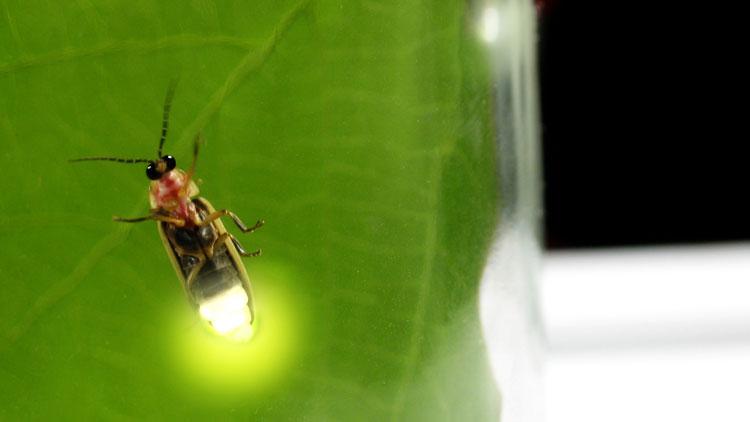
Welcome to one of the biggest light shows nature has to offer! In late May or early June, something spectacular happens in Great Smoky Mountains National Park. Each night for about two weeks, thousands of fireflies light up the forest by flashing at the same time. Then, after a few seconds, they stop. The abrupt stop in flashing creates complete darkness. After a few more seconds, the fireflies all flash again, and the pattern of flashing and darkness continues for a couple hours.
The stars of this light show are called synchronous fireflies, and their flashing pattern is part of their mating display. Males fly around and flash to attract females. Then females, usually sitting still on the ground, respond with another flash. Every year, hundreds of people travel to Tennessee to see the synchronous fireflies’ display.
Not Your Typical Backyard Bug
Synchronous fireflies are different from the fireflies or lightning bugs you might see outside on a summer night. Their synchronized “flash mob” patterns make them unique. Different kinds of synchronous fireflies have different flash patterns. In the United States, they can be found only in Tennessee, Pennsylvania, South Carolina, and Arizona. Synchronous fireflies are more common in Southeast Asia, where they mate year-round.

Brilliant Beetles
Did you know that fireflies are actually beetles? Most fireflies have wings and produce light with an organ under their abdomen. The light is produced by a chemical reaction. It happens when oxygen combines with a substance in a firefly called luciferin. Scientists describe firefly light as “cold” because it gives off almost no heat. Fireflies are more efficient than most light bulbs!
What Do You Think? Why do you think synchronous fireflies live where they do? Research and find out!
Photo Credit: (t)Nori Yuasa/500px/Getty Images, (b)Anita Patterson Peppers/Shutterstock.com



